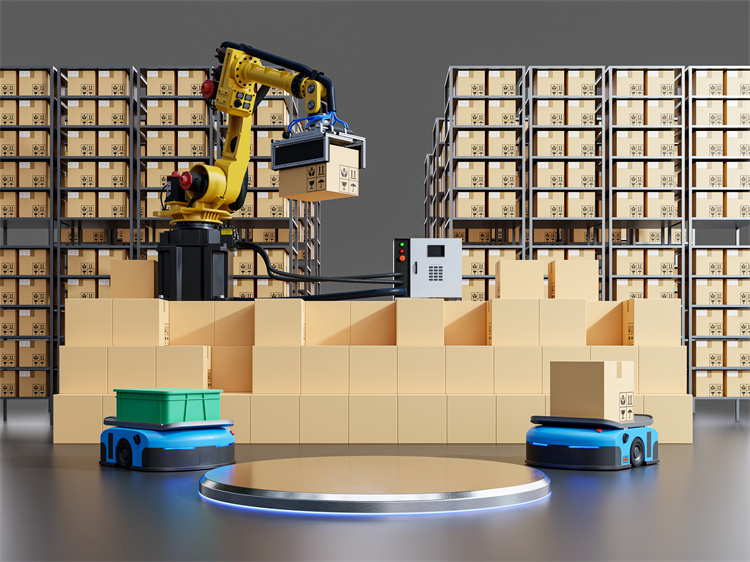Vietnam's Warehouse Development: Trends to Watch by 2025

Vietnam's economic growth has significantly impacted its logistics sector. The country's GDP grew by 7.40% in Q3 of 2024, reflecting robust development. Logistics now contributes around 4.92% to Vietnam's GDP, highlighting its importance. Warehouse development plays a crucial role in supporting this growth. As the demand for efficient storage solutions rises, understanding the warehouse development trends in Vietnam 2025 becomes essential for sustaining economic activities.
Current State of Warehouse Development in Vietnam

Overview of Existing Infrastructure
Key Locations and Facilities
Vietnam's warehouse infrastructure has seen significant growth. Key locations include Ho Chi Minh City, Hanoi, and Da Nang. These cities host modern facilities that cater to diverse storage needs. The strategic positioning near ports and industrial zones enhances their appeal. Warehouses in these areas offer advanced features, such as temperature control and high-security systems.
Current Capacity and Utilization Rates
The current capacity of warehouses in Vietnam continues to expand. Utilization rates remain high due to increasing demand from sectors like e-commerce and manufacturing. Efficient space management becomes crucial as businesses seek to optimize storage solutions. This trend reflects the need for continuous investment in infrastructure to meet growing demands.
Government Policies and Initiatives
Investment Incentives
The Vietnamese government actively promotes warehouse development through investment incentives. Tax breaks and favorable land lease terms attract both local and foreign investors. These incentives aim to boost the logistics sector and support economic growth. By encouraging investment, the government seeks to enhance the country's competitive edge in the region.
Regulatory Framework
A robust regulatory framework governs warehouse operations in Vietnam. Clear guidelines ensure compliance with safety and environmental standards. The government regularly updates regulations to align with international best practices. This approach fosters a stable environment for investors and operators, promoting sustainable development.
Challenges Facing the Sector
Land Acquisition and Zoning Issues
Land acquisition poses a significant challenge for warehouse development. Zoning restrictions and bureaucratic hurdles often delay projects. Developers face difficulties in securing suitable land, impacting expansion plans. Addressing these issues requires streamlined processes and supportive policies to facilitate growth.
Infrastructure and Connectivity Limitations
Infrastructure limitations hinder warehouse efficiency. Inadequate road networks and connectivity issues affect transportation and logistics. These challenges increase operational costs and complicate supply chain management. Improving infrastructure remains essential to support the sector's expansion and meet future demands.
Without proper warehouse management, managers and operators encounter complex challenges. Efficient systems are vital to overcoming these obstacles and ensuring smooth operations.
Emerging Trends in Warehouse Development

Technological Advancements
Automation and Robotics
Vietnam's warehouse sector embraces automation and robotics to enhance efficiency. Automated Guided Vehicles (AGVs) and robotic systems streamline operations, reducing labor costs and increasing precision. These technologies enable faster processing and handling of goods, meeting the rising demands of e-commerce and manufacturing sectors. By 2025, the integration of these systems will become a standard practice in warehouse develop trends in Vietnam 2025.
Smart Warehousing Solutions
Smart warehousing solutions transform traditional storage facilities into intelligent hubs. The use of IoT devices and AI-driven management systems optimizes inventory control and space utilization. These technologies provide real-time data, allowing operators to make informed decisions quickly. As digital transformation continues, smart warehouses will play a pivotal role in shaping warehouse develop trends in Vietnam 2025.
Sustainability and Green Practices
Energy-efficient Designs
Sustainability becomes a core focus in warehouse development. Energy-efficient designs reduce operational costs and environmental impact. Warehouses incorporate solar panels, LED lighting, and advanced insulation to minimize energy consumption. These practices align with global sustainability goals and reflect a growing trend in warehouse develop trends in Vietnam 2025.
Waste Management and Recycling
Effective waste management and recycling initiatives gain prominence. Warehouses implement systems to manage waste responsibly, promoting recycling and reducing landfill contributions. These efforts not only support environmental sustainability but also enhance the reputation of businesses committed to green practices. By 2025, such initiatives will be integral to warehouse develop trends in Vietnam 2025.
E-commerce and Its Impact
Rise of Fulfillment Centers
The e-commerce boom drives the rise of fulfillment centers across Vietnam. These specialized warehouses cater to the fast-paced demands of online shopping, ensuring quick and accurate order processing. Fulfillment centers become essential components of the supply chain, reflecting a significant shift in warehouse develop trends in Vietnam 2025.
Demand for Last-mile Delivery Solutions
Last-mile delivery solutions gain traction as consumers seek faster delivery times. Warehouses adapt by integrating logistics technologies that enhance delivery efficiency. This trend underscores the importance of flexible and responsive warehousing in meeting consumer expectations. By 2025, last-mile solutions will be a key aspect of warehouse develop trends in Vietnam 2025.
Future Forecasts and Strategic Opportunities
Predicted Growth Areas
Expansion in Rural and Underserved Regions
Vietnam's warehouse sector is set to expand into rural and underserved regions. These areas offer untapped potential for growth. The government supports this expansion through incentives and infrastructure development. By 2025, these regions will play a crucial role in the warehouse develop trends in Vietnam 2025. Businesses can capitalize on lower land costs and labor availability, enhancing their competitive edge.
Development of Multi-modal Logistics Hubs
Multi-modal logistics hubs will emerge as key components of Vietnam's logistics landscape. These hubs integrate various transportation modes, improving efficiency and connectivity. Strategic locations near ports and industrial zones will enhance their effectiveness. By 2025, these hubs will drive significant changes in warehouse develop trends in Vietnam 2025, offering streamlined operations and reduced costs.
Investment Opportunities
Public-Private Partnerships
Public-private partnerships (PPPs) present lucrative opportunities for investors. The Vietnamese government encourages collaboration with private entities to boost infrastructure development. PPPs can accelerate the growth of logistics facilities, aligning with warehouse develop trends in Vietnam 2025. Investors benefit from shared risks and resources, fostering innovation and efficiency.
Foreign Direct Investment Prospects
Vietnam's regulatory openness and incentives attract foreign direct investment (FDI). The country's strategic location and economic growth make it appealing to global investors. FDI in warehousing supports technological advancements and infrastructure improvements. By 2025, foreign investors will significantly influence warehouse develop trends in Vietnam 2025, contributing to the sector's modernization.
Strategic Recommendations for Stakeholders
Leveraging Technology for Competitive Advantage
Stakeholders must embrace technology to stay competitive. Automation, robotics, and smart warehousing solutions enhance operational efficiency. These technologies align with warehouse develop trends in Vietnam 2025, enabling faster and more accurate processes. Businesses should invest in digital transformation to meet evolving market demands.
Building Resilient and Flexible Supply Chains
Resilient and flexible supply chains are vital for success. Stakeholders should focus on adaptability and risk management. Diversifying supply sources and optimizing logistics networks will ensure stability. By 2025, these strategies will be integral to warehouse develop trends in Vietnam 2025, supporting sustainable growth and customer satisfaction.
Vietnam's warehouse development trends in 2025 reveal significant shifts. Key trends include technological advancements, sustainability, and the rise of e-commerce. These changes impact the logistics sector, driving efficiency and innovation. The future of warehouse development in Vietnam looks promising, with opportunities for growth in rural areas and multi-modal hubs. Industry stakeholders must adapt to these trends. Embracing digital transformation and leveraging technology like AI and IoT will be crucial. By doing so, they can ensure success in the evolving logistics landscape and contribute to Vietnam's economic growth.
See Also
5 Key Trends Shaping Future Supply Chain Efficiency
Revealing JUSDA's Latest Warehousing Efficiency Innovations
High-Tech Manufacturing Warehouses: The Automated Future
Tomorrow's Logistics Revolution: The Impact of AI in Supply Chain
Boosting Warehouse Productivity with Logistics Robotics Power
